 W
WMir was a space station that operated in low Earth orbit from 1986 to 2001, operated by the Soviet Union and later by Russia. Mir was the first modular space station and was assembled in orbit from 1986 to 1996. It had a greater mass than any previous spacecraft. At the time it was the largest artificial satellite in orbit, succeeded by the International Space Station (ISS) after Mir's orbit decayed. The station served as a microgravity research laboratory in which crews conducted experiments in biology, human biology, physics, astronomy, meteorology, and spacecraft systems with a goal of developing technologies required for permanent occupation of space.
 W
WHuman spaceflights were vital to the operation of Mir, allowing crews and equipment to be carried to and from the space station. Mir was visited by a total of 39 crewed missions, comprising 30 Soyuz flights and 9 Space Shuttle flights. These missions carried both long-duration crew members flying principal expeditions and short-term visitors. Many of the crew who visited Mir used different spacecraft to launch than they did to land; the first such examples were Aleksandr Viktorenko and Muhammed Faris who flew up in Soyuz TM-3 and landed a week later in Soyuz TM-2 on 30 July 1987. The largest crew aboard Mir simultaneously was 6, which first occurred with the launch of Soyuz TM-7 on 26 November 1988 and lasted for just over three weeks.
 W
WMir was a Soviet and later Russian space station, operational in low Earth orbit from 1986 to 2001. With a mass greater than that of any previous space station, Mir was constructed from 1986 to 1996 with a modular design, the first to be assembled in this way. The station was the largest artificial satellite orbiting the Earth until its deorbit on 21 March 2001, a record now surpassed by the International Space Station (ISS). Mir served as a microgravity research laboratory in which crews conducted experiments in biology, human biology, physics, astronomy, meteorology and spacecraft systems in order to develop technologies required for the permanent occupation of space.
 W
WThe terms Androgynous Peripheral Attach System (APAS), Androgynous Peripheral Assembly System (APAS) and Androgynous Peripheral Docking System (APDS), are used interchangeably to describe a family of spacecraft docking mechanisms, and are also sometimes used as a generic name for any docking system in that family. A system similar to APAS-89/95 is used by the Chinese Shenzhou spacecraft.
 W
WThe Russian space station Mir ended its mission on 23 March 2001, when it was brought out of its orbit, entered the atmosphere and was destroyed. Major components ranged from about 5 to 15 years in age, and included the Mir Core Module, Kvant-1, Kvant-2, Kristall, Spektr, Priroda, and Docking Module. Although Russia was optimistic about Mir's future, the country's commitments to the International Space Station programme left no funding to support Mir.
 W
WDragonfly: NASA and the Crisis Aboard Mir (ISBN 0-88730-783-3) is a 1999 book by Bryan Burrough about the Russian Mir space station and the cosmonauts and astronauts who served aboard. The story centres on astronaut Jerry Linenger and the events on the Shuttle and Mir Space Programme in 1997.
 W
WEuromir was an international space programme in the 1990s. Between the Russian Federal Space Agency and the European Space Agency (ESA), it would bring European astronauts to the Mir space station.
 W
WJoseph Richard Gutheinz is an American attorney, college instructor, commissioner, writer, and former Army intelligence officer, Army aviator, and Federal law enforcement officer. He is known as the founder of the "Moon Rock Project" which aims to track down missing Apollo Moon rock samples.
 W
WThe Kristall module was the fourth module and the third major addition to Mir. As with previous modules, its configuration was based on the 77K (TKS) module, and was originally named "Kvant 3". It was launched on May 31, 1990 on Proton-K. It docked to Mir autonomously on June 10, 1990.
 W
WKvant-1 (37KE) was the first module to be attached in 1987 to the Mir Core Module, which formed the core of the Soviet space station Mir. It remained attached to Mir until the entire space station was deorbited in 2001.
 W
WKvant-2 was the third module and second major addition to the Mir space station. Its primary purpose was to deliver new science experiments, better life support systems, and an airlock to Mir. It was launched on November 26, 1989 on a Proton rocket. It docked to Mir on December 6. Its control system was designed by the NPO "Electropribor".
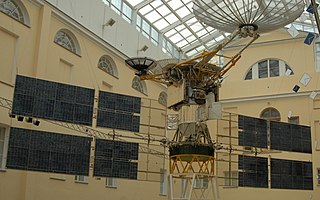 W
WThe Luch Satellite Data Relay Network (SDRN), also referred to as Altair and Gelios, is a series of geosynchronous Russian relay satellites, used to transmit live TV images, communications and another telemetry from the Soviet/Russian space station Mir, the Russian Orbital Segment (ROS) of the International Space Station and other orbital spacecraft to the Earth, in a manner similar to that of the upcoming Indian Data Relay Satellite System and US Tracking and Data Relay Satellite System.
 W
WThe Lyappa arm, officially Automatic system of re-docking, was a robotic arm used during the assembly of the Soviet/Russian space station Mir. Each of the Kvant-2, Kristall, Spektr and Priroda modules was equipped with one of these arms, which, after the module had docked to the core module's forward port, grappled one of two fixtures positioned on the core module's hub module. The module's main docking probe was then retracted, and the arm raised the module so that it could be pivoted 90 degrees for docking to one of the four radial docking ports.
 W
WMir, DOS-7, was the first module of the Soviet/Russian Mir space station complex, in low Earth orbit from 1986 to 2001. Generally referred to as either the core module or base block, the module was launched on 20 February 1986 on a Proton-K rocket from LC-200/39 at the Baikonur Cosmodrome. The spacecraft was generally similar in design to the two previous Soviet orbital stations, Salyut 6 and Salyut 7, however possessed a revolutionary addition in the form of a multiple docking node at the forward end of the module. This, in addition to the docking port at the rear of the spacecraft, allowed five additional modules to be docked directly to DOS-7, greatly expanding the station's capabilities.
 W
WThe Stykovochnyy Otsek, GRAU index 316GK, otherwise known as the Mir docking module or SO, was the sixth module of the Russian space station Mir, launched in November 1995 aboard the Space Shuttle Atlantis. The module, built by RKK Energia, was designed to help simplify space shuttle dockings to Mir during the Shuttle-Mir programme, preventing the need for the periodic relocation of the Kristall module necessary for dockings prior to the compartment's arrival. The module was also used to transport two new photovoltaic arrays to the station, as a mounting point for external experiments, and as a storage module when not in use for dockings.
 W
WThe Mir Environmental Effects Payload (MEEP) was a set of four experiments installed on the Russian space station Mir from March 1996 to October 1997 to study the effects of space debris impacts and exposure to the space environment on a variety of materials. The materials used in the experiments were being considered for use on the International Space Station, and by exposing them at a similar orbital altitude to that flown by the ISS, the experiments provided an assessment of the performance of those materials in a similar space environment. MEEP also fulfilled the need to examine the occurrence and effects of man-made debris and natural micrometeoroids through capture and impact studies. The experiments were installed on the Mir docking module during STS-76, and retrieved during STS-86.
 W
WSoyuz T-15 was a crewed mission to the Mir and Salyut 7 space stations and was part of the Soyuz programme. It marked the final flight of the Soyuz-T spacecraft, the third generation Soyuz spacecraft, which had been in service for seven years from 1979 to 1986. This mission marked the first time that a spacecraft visited, and docked with, two space stations in the same mission.
 W
WMir EO-2 was the second long duration expedition to the Soviet space station Mir, and it lasted from February to December 1987. The mission was divided into two parts, the division occurring when one of the two crew members, Aleksandr Laveykin, was replaced part way through the mission by Aleksandr Aleksandrov. Laveykin was replaced because ground-based doctors had diagnosed him with minor heart problems.
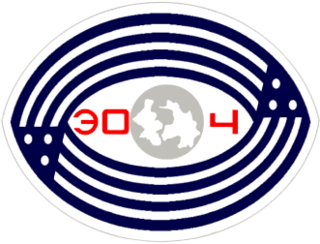 W
WMir EO-4 was the fourth long-duration expedition to the Soviet space station Mir. The expedition began in November 1988, when crew members Commander Aleksandr Volkov and Flight Engineer Sergei Krikalev arrived at the station via the spacecraft Soyuz TM-7. The third crew member of EO-4, Valeri Polyakov, was already aboard Mir, having arrived in August 1988 part way through the previous expedition, Mir EO-3.
 W
WMir EO-8 was the eighth crewed expedition to the space station Mir, lasting from December 1990 to May 1991. The crew, consisting of Russian cosmonauts Viktor Afanasyev and Musa Manarov, launched along with space journalist Toyohiro Akiyama on December 2, 1990 aboard Soyuz TM-11. Akiyama returned aboard Soyuz TM-10 with the outgoing Mir EO-7 crew on December 10. Afanasyev and Manarov returned aboard Soyuz TM-11 on May 26, 1991.
 W
WMir EO-19 was the nineteenth crewed expedition to the space station Mir, lasting from June to September 1995. The crew, consisting of Russian cosmonauts Anatoly Solovyev and Nikolai Budarin, launched on June 27, 1995 aboard the Space Shuttle Atlantis on the STS-71 mission. After remaining aboard Mir for approximately 75 days, Solovyev and Budarin returned aboard the Soyuz TM-21 spacecraft on September 11, 1995.
 W
WSoyuz TM-22 was the 23rd crewed spacecraft mission to visit the Soviet Space Station Mir.
 W
WMir EO-21 was a long-duration mission aboard the Russian Space station Mir, which occurred between February and September 1996. The crew consisted of two Russian cosmonauts, Commander Yuri Onufrienko and Yury Usachov, as well as American astronaut Shannon Lucid. Lucid arrived at the station about a month into the expedition, and left about a week following its conclusion; NASA refers to her mission as NASA-2. She was the second American to have a long-duration stay aboard Mir, the first being Norman Thagard, as a crew member of Mir EO-18; he stayed on the station for 111 days. Some sources refer to her mission as Mir NASA-1, claiming that she was the first American to have a long-duration stay aboard Mir.
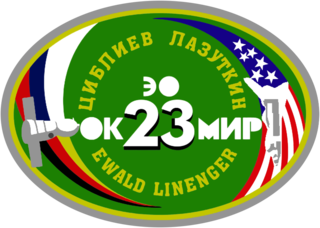 W
WMir EO-23 was the 23rd long-duration mission to Russia's Mir space station. It is notable for both the fire that occurred during the mission, and the crash that caused one of the station's modules to be permanently sealed off.
 W
WMir EO-24 was the 24th long-duration mission to Russia's Mir space station.
 W
WSoyuz TM-30, also known as Mir EO-28, was a Soyuz mission, the 39th and final human spaceflight to the Mir space station. The crew of the mission was sent by MirCorp, a privately funded company, to reactivate and repair the station. The crew also resupplied the station and boosted the station to an orbit with a low point (perigee) of 360 and a high point (apogee) of 378 kilometers ; the boost in the station's orbit was done by utilizing the engines of the Progress M1-1 and M1-2 spacecraft. At that time a transit between Mir and the International Space Station was already impossible - such a transfer was deemed undesired by NASA - and the orbital plane of ISS had been chosen some time before to be around 120 degrees away from that of Mir. The mission was the first privately funded mission to a space station.
 W
WMir EO-2 was the second long duration expedition to the Soviet space station Mir, and it lasted from February to December 1987. The mission was divided into two parts, the division occurring when one of the two crew members, Aleksandr Laveykin, was replaced part way through the mission by Aleksandr Aleksandrov. Laveykin was replaced because ground-based doctors had diagnosed him with minor heart problems.
 W
WMir EP-2 was a visiting expedition to the Mir space station conducted in June 1988 by cosmonauts Anatoly Solovyev, Viktor Savinykh and Aleksandr Aleksandrov. Launched aboard the Soyuz TM-5 spacecraft, the crew spent ten days in space before returning to Earth aboard Soyuz TM-4. The mission occurred while the EO-3 crew were aboard Mir.
 W
WMir was a space station that operated in low Earth orbit from 1986 to 2001, operated by the Soviet Union and later by Russia. Mir was the first modular space station and was assembled in orbit from 1986 to 1996. It had a greater mass than any previous spacecraft. At the time it was the largest artificial satellite in orbit, succeeded by the International Space Station (ISS) after Mir's orbit decayed. The station served as a microgravity research laboratory in which crews conducted experiments in biology, human biology, physics, astronomy, meteorology, and spacecraft systems with a goal of developing technologies required for permanent occupation of space.
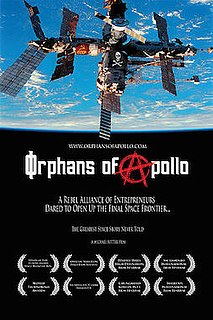 W
WOrphans of Apollo is a 2008 documentary film directed and produced by Michael Potter, co-directed by Becky Neiman and edited by Todd Jones, which describes how a band of entrepreneurs tried to privatize the space station Mir and tells the story that led to the development of MirCorp. It features prominent NewSpace entrepreneurs and space advocates, backed financially by Walter Anderson.
 W
WOut of the Present is a documentary film by Andrei Ujică from 1995 that deals with the prolonged stay of the Russian cosmonaut Sergei Krikalev at space station Mir. This was the first time a 35 mm film camera was used in space.
 W
WThe Priroda module was the seventh and final module of the Mir Space Station. Its primary purpose was to conduct Earth resource experiments through remote sensing and to develop and verify remote sensing methods. The control system of Priroda was developed by the Khartron.
 W
WProgress M1-5 was the Progress spacecraft which was launched by Russia in 2001 to deorbit the fifteen-year-old Mir space station in a controlled fashion over a remote ocean area, far away from shipping lanes - otherwise Mir's orbit would have decayed uncontrolled over time, with debris potentially landing in a populated area. The Russian Aviation and Space Agency, Rosaviakosmos, was responsible for the mission.
 W
WThe Shuttle–Mir program was a collaborative 11-mission space program between Russia and the United States that involved American Space Shuttles visiting the Russian space station Mir, Russian cosmonauts flying on the Shuttle, and an American astronaut flying aboard a Soyuz spacecraft to engage in long-duration expeditions aboard Mir.
 W
WSoyuz T-15 was a crewed mission to the Mir and Salyut 7 space stations and was part of the Soyuz programme. It marked the final flight of the Soyuz-T spacecraft, the third generation Soyuz spacecraft, which had been in service for seven years from 1979 to 1986. This mission marked the first time that a spacecraft visited, and docked with, two space stations in the same mission.
 W
WSpektr was the fifth module of the Mir Space Station. The module was designed for remote observation of Earth's environment containing atmospheric and surface research equipment. Spektr also had four solar arrays which generated about half of the station's electrical power.
 W
WStrela is a class of four Russian built cargo cranes used during EVAs to move cosmonauts and components around the exterior of the Soviet/Russian space station Mir and the Russian Orbital Segment of the International Space Station.
 W
WTORU system is a manual docking system of Russian Soyuz and Progress spacecraft that serves as a backup to the automatic Kurs system. It was used on the former Mir space station and is currently in use on the International Space Station. The TORU system became known to the public in 1997 when it was used during the manual approach of Progress M-34 to Mir that ended up with a dangerous collision. It was an approach of a previously used Progress spacecraft with the purpose of research work on further improvement of TORU.
 W
WThe VBK-Raduga capsule was a reentry capsule that was used for returning materials to Earth's surface from the space station Mir. They were brought to Mir in the Progress-M cargo craft's dry cargo compartment. For return, the capsule would be substituted for the Progress' docking probe before it left the space station, and then after the Progress-M performed its deorbit burn, the capsule was ejected at 120 km altitude to reenter the atmosphere independently. It would then parachute to a landing area in Russia.
 W
W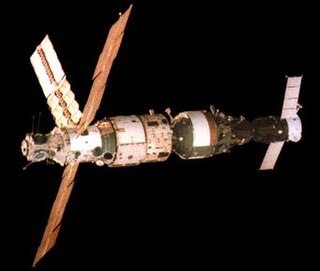 W
W